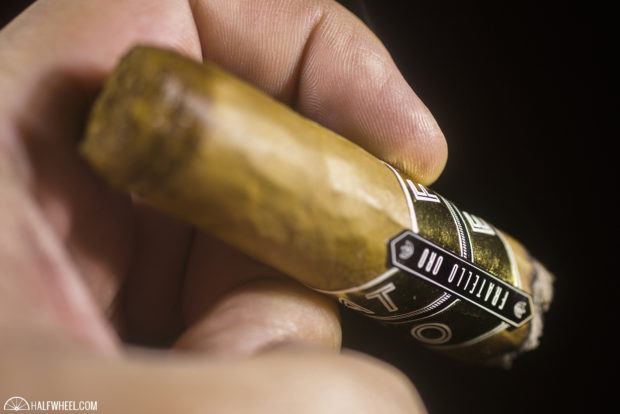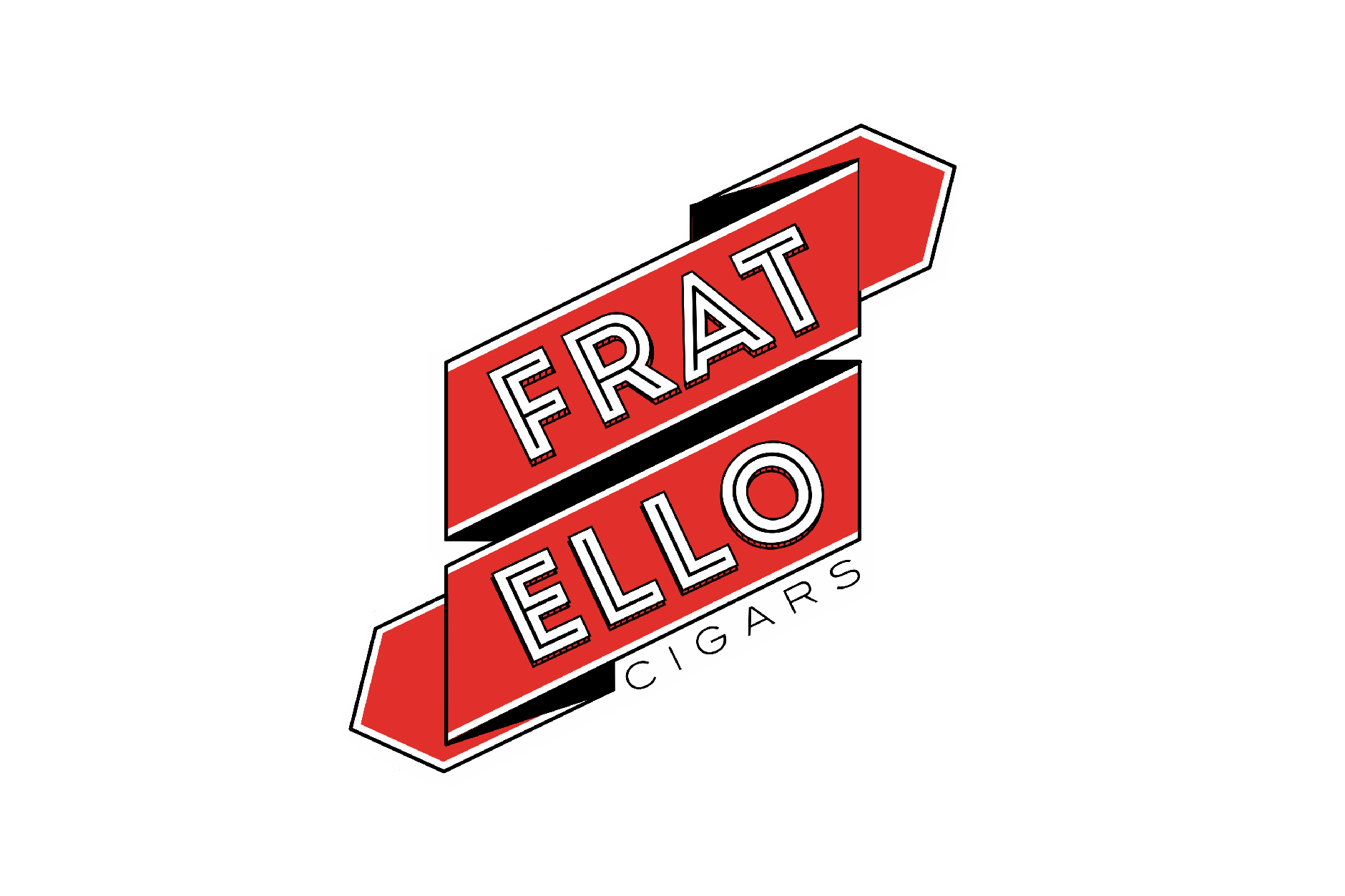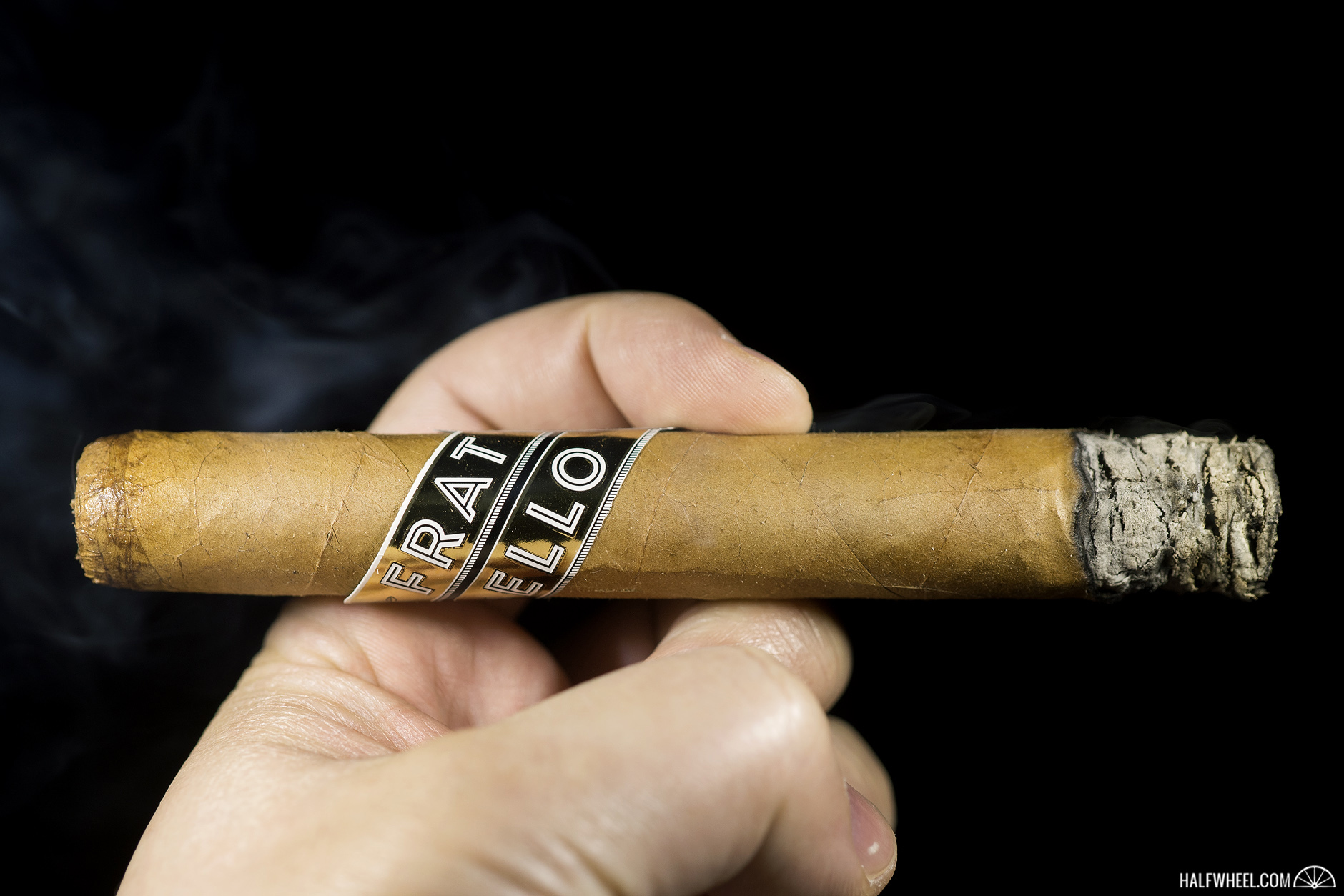Omar de Frias is Dominican. And yet, his cigars are made in Nicaragua. Until now—or last year, rather.
At the 2016 IPCPR Convention & Trade Show, Fratello showed off a new line hailing from his home country called Oro. Translating to gold, Oro uses a golden Connecticut shade wrapper from Ecuador, a Cameroon binder and fillers from the Dominican Republic and Nicaragua.
It’s being produced by La Aurora, the oldest cigar company in the Dominican Republic, in six sizes:

- Fratello Oro Shorty (4 x 58) — $8.50 (Boxes of 20, $170)
- Fratello Oro Robusto (5 x 50) — $8.25 (Boxes of 20, $165)
- Fratello Oro Corona (5 1/2 x 47) — $8 (Boxes of 20, $160)
- Fratello Oro Gordo (6 x 60) — $9.50 (Boxes of 20, $190)*
- Fratello The Boxer Oro (6 1/4 x 52) — $9.75 (Boxes of 20, $195)
- Fratello Oro Toro (6 1/4 x 54) — $9 (Boxes of 20, $180)
*Not pictured.

- Cigar Reviewed: Fratello Oro Corona
- Country of Origin: Dominican Republic
- Factory: La Aurora Cigar Factory
- Wrapper: Ecuadorian Connecticut
- Binder: Cameroon
- Filler: Dominican Republic & Nicaragua
- Length: 5 1/2 Inches
- Ring Gauge: 47
- Vitola: Corona
- MSRP: $8 (Boxes of 20, $160)
- Release Date: Nov. 24, 2016
- Number of Cigars Released: Regular Production
- Number of Cigars Smoked For Review: 3
While there’s nothing wrong with the gold band–other than photographing it can be a challenge–I do wonder if the company’s original red band would look better. The wrapper aroma is extremely uniform in color with a couple veins littering an otherwise impressive appearance. Aroma off the Ecuadorian leaf smells of pita bread, sunflower seeds and some milder barnyard flavors. The foot is a bit odd; it’s a positive experience, but there’s some smell that reminds me of a freshly painted room. It lacks the toxic and acidic nature I normally find, but it actually plays nicely with the white pepper, leather and raisins that I also pick up from the foot. Cold draws remind me of a caramel Frappuccino with Cracker Jacks and a touch of minerality.
The Oro begins with sweet grain cereal, some pancakes, mild charcoal and a touch of pink salt on the tip of the tongue. One sample has ripe lemon under the tongue, while the other two present that as more of a floral flavor. There’s a lot of smoke from the foot and an ample amount coming from the head each time I take a puff. It’s quite grainy with a watered down rye whiskey note being the most prominent, followed by some peppermint, a really dark chocolate, blackberries and some creamed corn. As one might expect, most of those flavors come from retrohales, which are quite detailed. Flavor is full, body is medium-full and strength is mild to medium.
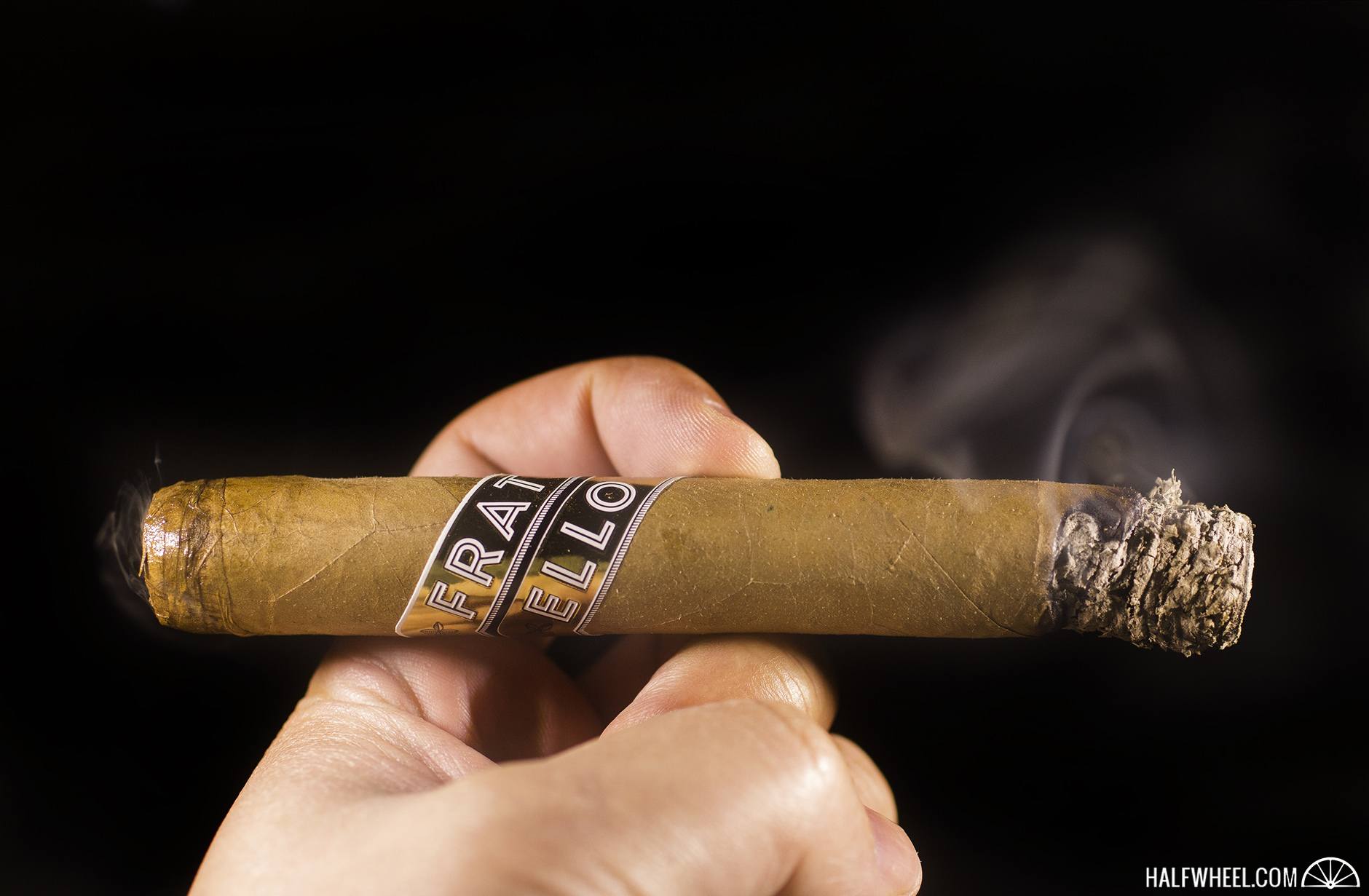
In all three samples, strength picks up a lot at some point before the halfway mark. It’s not at the same time—one sample saw it more in the first third than the second third—and it doesn’t last, but it’s a bit of a surprising twist. It ends up settling back down to medium by the halfway mark. Flavor-wise, the grainy flavors remain at the forefront, behind it is a mixture of floral, ketchup and at times a potato flavor. There’s a lot of white pepper on the back of the throat, which lasts a while into the finish, joined by nuts and toastiness, the latter of which combines with the aforementioned ketchup to give the Fratello Oro a barbecue-like flavor on the back end. Generic creaminess and black pepper, the calling cards of Connecticut-wrapped cigars remain non-existent. Construction remains fine with one cigar requiring a touch-up, but the others perform flawlessly.
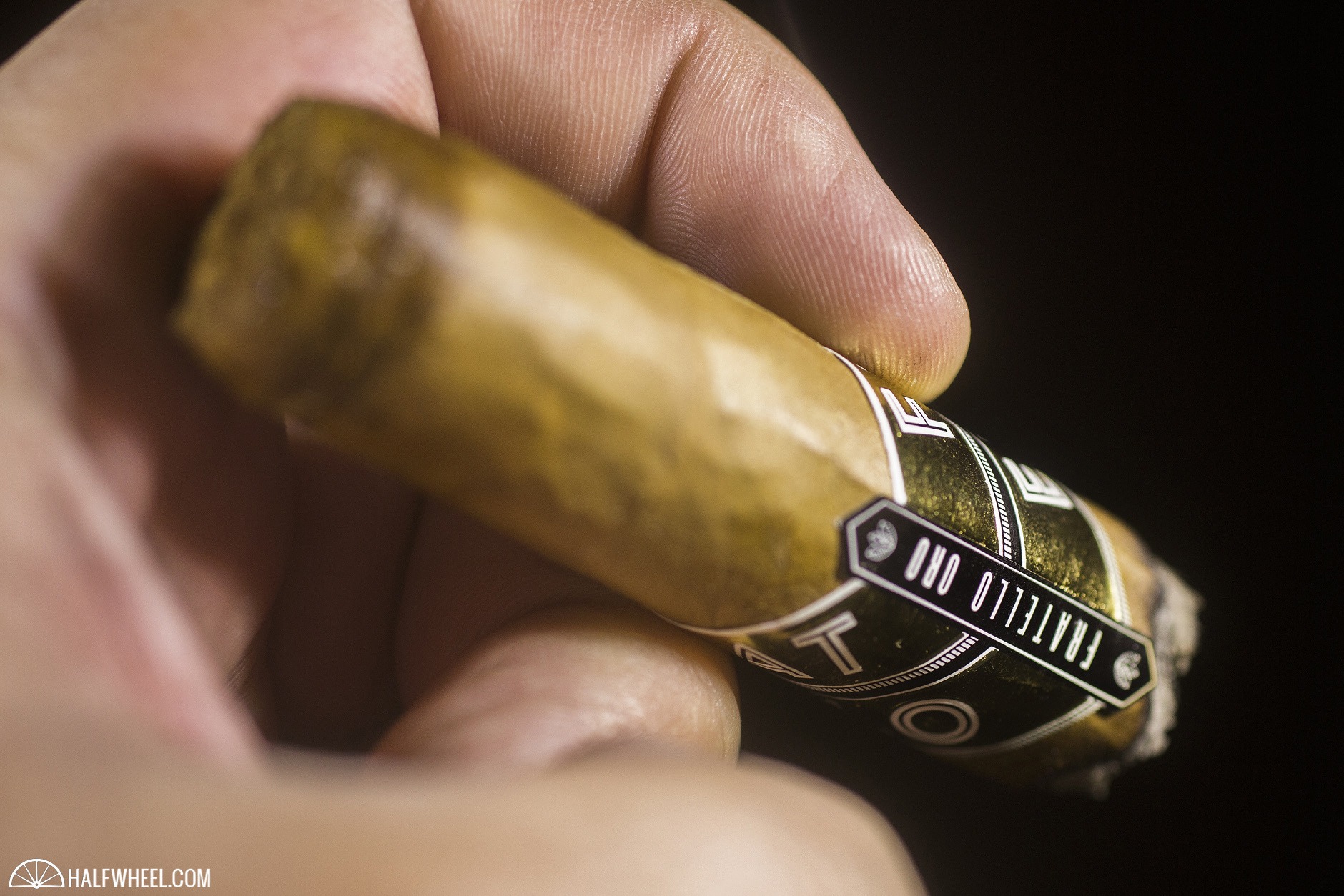
While I begin to pick up some creaminess, it’s something that reminds me more of tangerine ice cream than a coffee complement. Black pepper also finds its way into the profile, but it’s a distinct burnt black pepper—sort of like licking a charred steak—and not at all a classic Connecticut flavor. Earth is now battling the grains for the controlling flavor of the Fratello, but it never really gets to the point of taking over as the main flavor. Cedar makes its way into the mixture right before the final inch, though it’s arguably the weakest flavor of the bunch. Strength bumps up slightly to medium-plus, stronger than where the cigar was at the middle point, but not as strong as it got during the ramp up.

Final Notes
- Two of the three cigars I smoke had feet that were square pressed. I don’t think that was intended and it certainly seemed like something that was a result of storage, likely from the box.
- The draw was about as good as any I’ve experienced on a cigar I’ve reviewed in quite some time. Little resistance when I initially puffed and then a half second into the puff some tightening. Patrick Lagreid often describes it as trying to drink a milkshake from a straw and it was similar here.
- I would highly recommend going as slow as possible with this cigar, more than a minute between puffs. There’s not an overt harshness that punishes you when you push it, but the flavors are so much more developed when you give the cigar a bit more time.
- This might sound like an odd pairing recommendation, but I think this cigar is begging for a Dr. Pepper.
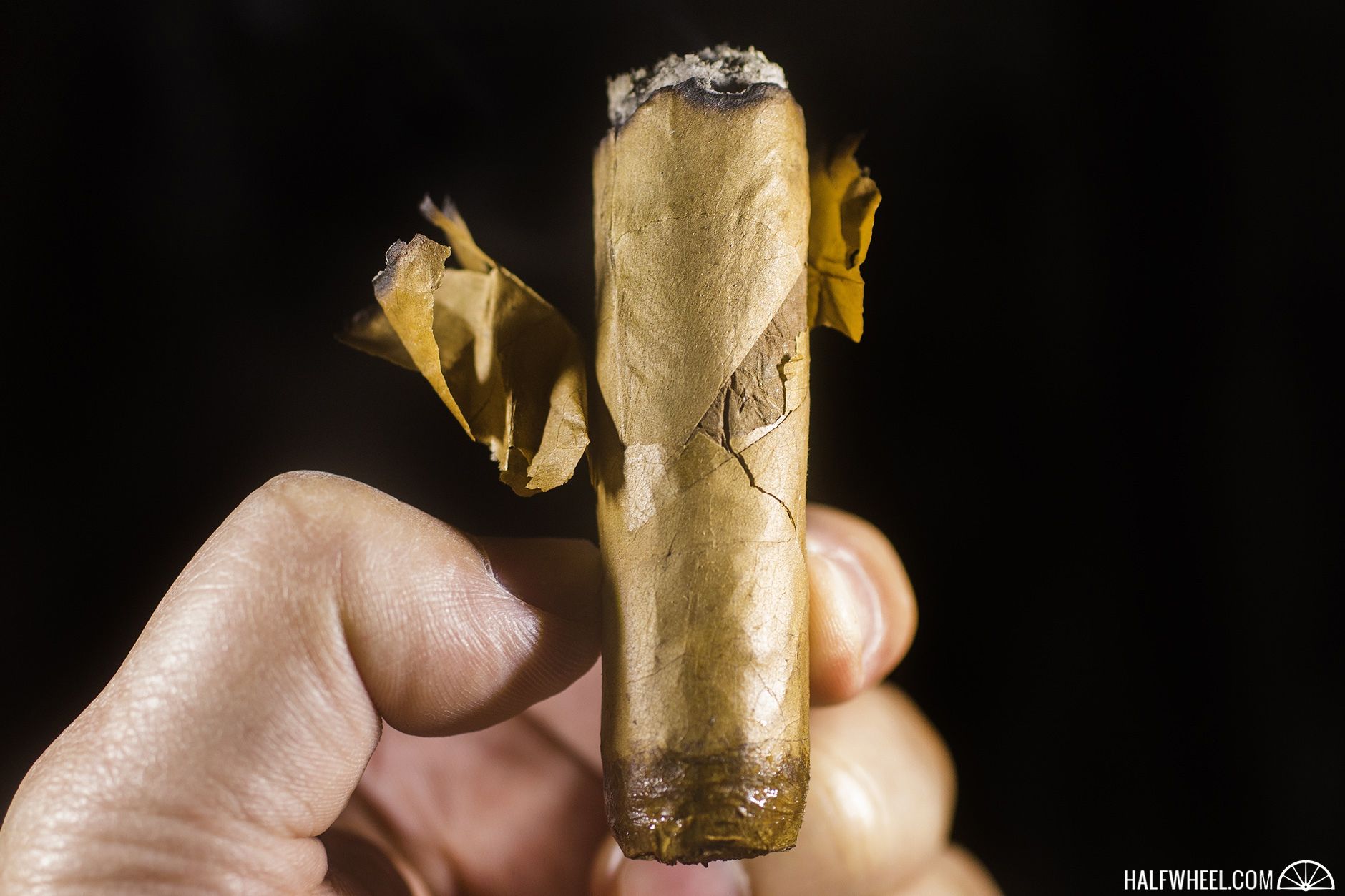
- Removing the band can be a bit messy. Each time some of the wrapper was damaged in the process, though sliding the band for our traditional final third picture produced an excessive amount of damage.
- Cigars for the review were purchased by halfwheel.
- Miami Cigar & Co., which distributes La Aurora—though not Fratello—advertises on halfwheel.
- Final smoking time was one hour and 40 minutes on average.
- Site sponsors Atlantic Cigar Co., Elite Cigar Cafe (972.661.9136) and STOGIES World Class Cigars (713.783.5100) carry the Fratello Oro Corona.
I've never had a bad Fratello. But whether it be in lancero form or box-pressed, I've never had one that I would actively seek out. Until now. Much has been made about "new age Connecticuts"—but this isn't that. It's a nuanced, medium-full cigar with a blonde wrapper. I've not smoked any of the other sizes, but I don't think I need to; the Oro Corona is a winner. End scene.

